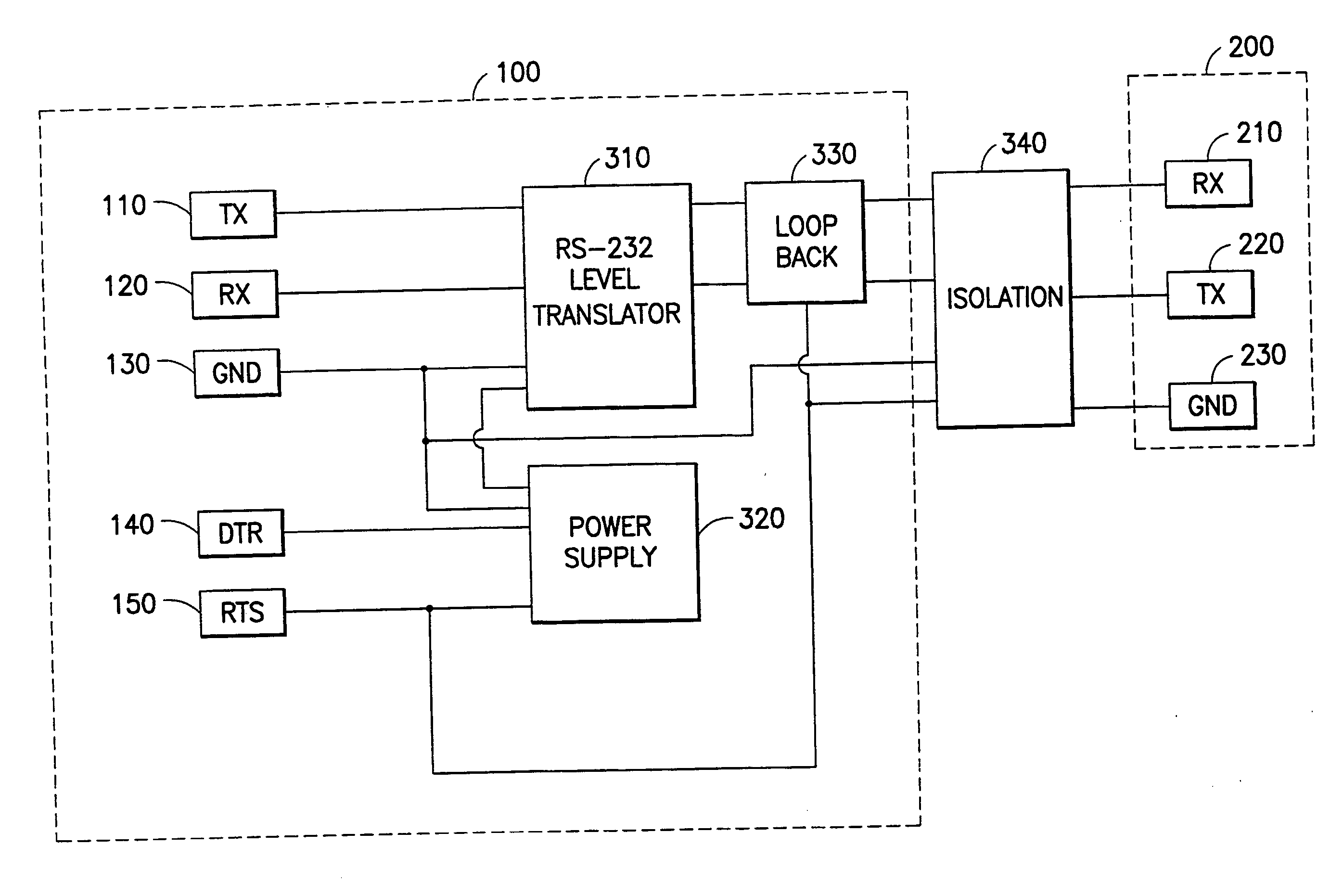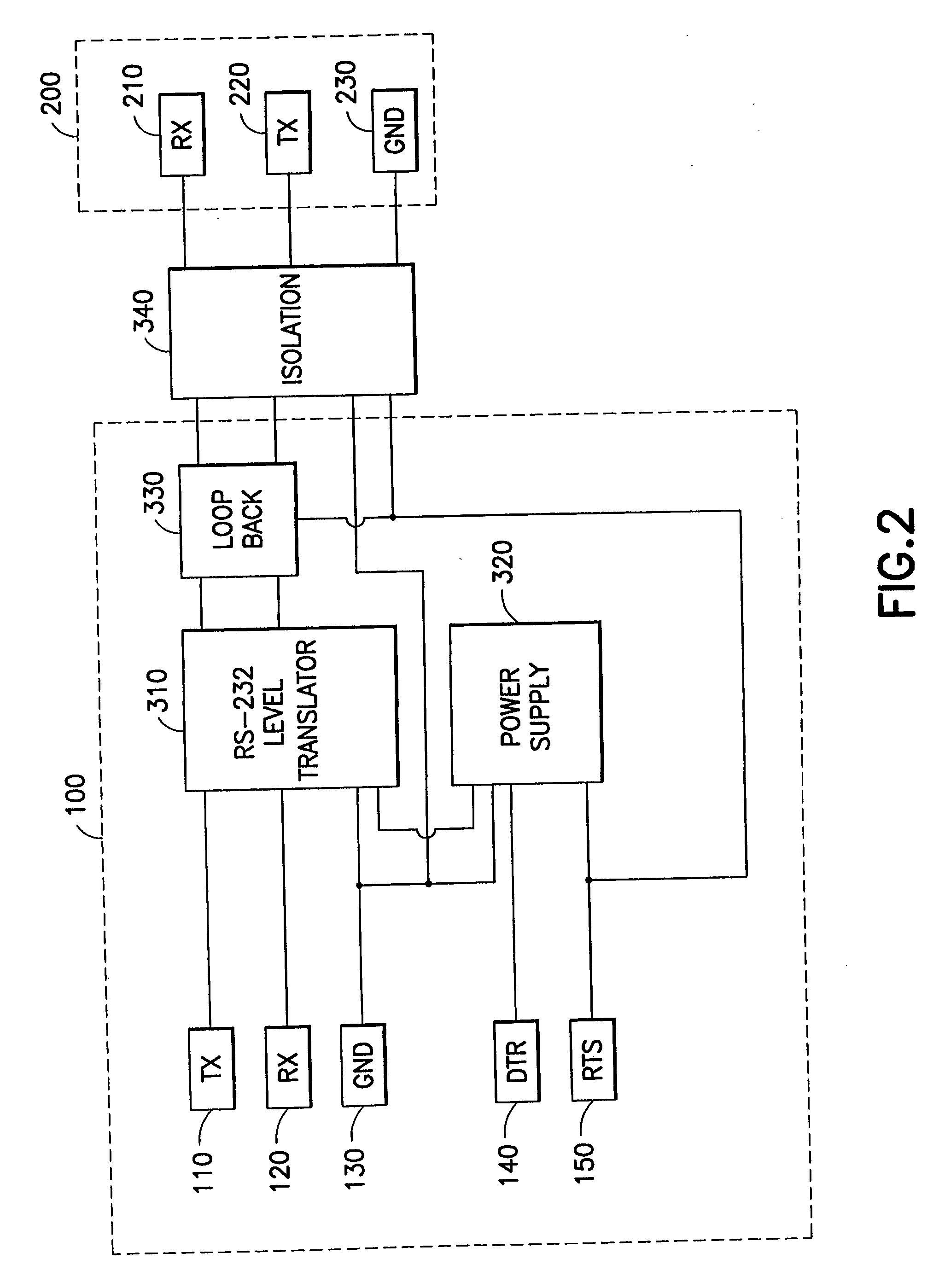Self powered serial-to-serial or USB-to-serial cable with loopback and isolation
a serial-to-serial or usb-to-serial cable technology, applied in the field of interface cables for medical devices, can solve the problems of increasing costs and complexity, undue strain on the battery of the medical device, and not being desirable to require the medical device to use a standard serial communication interface, etc., and achieve the effect of simple interfa
- Summary
- Abstract
- Description
- Claims
- Application Information
AI Technical Summary
Benefits of technology
Problems solved by technology
Method used
Image
Examples
Embodiment Construction
Preferred embodiments of the present invention will now be described with reference to the attached drawing figures.
Referring to FIG. 1, which shows an embodiment of the invention, where the interface cable 10 for the portable medical device 30 is a self-powered serial to serial optically isolated half duplex serial transmission cable. Cable 10 is preferably intended for half duplex operation. However, a simple change in the electronics portion 12 enables the cable 10 for full duplex operation, which later will be in more detail. Cable 10 is used to connect the base device 20 which could be a personal computer or similar device with a serial port (Standard or USB) to medical device 30. The cable has an electronics portion 12 which may house the circuitry that enables operation of the invention. The cable 10 connection to the medical device 30 is a connector that connects to the data port of the medical device 30, which in the case of a blood glucose monitor would be the test stri...
PUM
 Login to View More
Login to View More Abstract
Description
Claims
Application Information
 Login to View More
Login to View More - R&D
- Intellectual Property
- Life Sciences
- Materials
- Tech Scout
- Unparalleled Data Quality
- Higher Quality Content
- 60% Fewer Hallucinations
Browse by: Latest US Patents, China's latest patents, Technical Efficacy Thesaurus, Application Domain, Technology Topic, Popular Technical Reports.
© 2025 PatSnap. All rights reserved.Legal|Privacy policy|Modern Slavery Act Transparency Statement|Sitemap|About US| Contact US: help@patsnap.com



